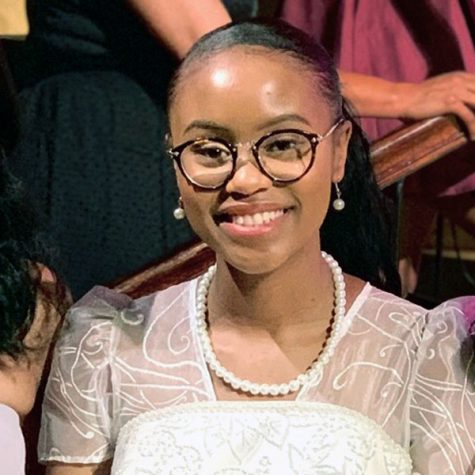Students learn new skills in ASL class
From club to course, teacher provides instruction
Mrs. Bonnie Conner provides instruction during the alpha period American Sign Language class.
American Sign Language is used by more than 500,000 people across the nation, and this school is no exception. Beginning this school year, the ASL class was created as an English elective to allow students to fully learn sign language and understand the deaf culture.
Born deaf, Ms. Bonnie Conner has been teaching ASL since 1984. Through email, she said, “I have taught ASL in the different places like residential setting, recreation and parks and (at the) university (level)” When it came to deciding to be a teacher, Conner said it happened naturally. “I worked with kids as a teacher aide for four years. So I went back to school to complete the degree,” she said.
Regarding the difficulty of learning ASL, Conner related it to any new language. “Any languages are equal to acquire; (it) depends on how much they immerse to use a certain language.” Whether someone is raised by learning one language or learns a language later on, Conner said, “There is no hard or easy way to acquire the language.”
Junior Kaylah Pitts agrees. Upon having deaf friends herself, Pitts decided to take the ASL class. Pitts said, “It used to hurt my feelings that I couldn’t communicate with them, so as soon as I saw that American Sign Language was an option, I seized the opportunity.”
Since the class is an English elective, Pitts also takes Spanish to fulfill her foreign language credit. However, she gets four college credits for taking ASL. Compared to Spanish, Pitts finds that ASL is easier to pick up. “I learn sign language faster than Spanish because my teacher is deaf, so I’m learning by immersion,” Pitts said. “Sign language is more interactive and real-life. You have to be there to truly understand. Every day is important.”
By having a deaf teacher, there can be some difficulties at the beginning when it comes to learning ASL. However, Pitts expressed her gratitude for Conner. “She’s understanding and she’s patient.” On Sept. 8, Pitts went bowling with the deaf league and did not feel out of place due to signing with her teacher every day. Pitts said, “When I interacted with other members of the deaf community, I didn’t feel uncomfortable.”
Pitts would recommend the class since students can catch a glimpse into someone else’s culture and world completely different from someone who is not deaf. Pitts said, “Deaf people are not often heard. I think it’s still important for their voices to be heard, even if they don’t literally use their voices. It’s important for them to be understood and not ignored.”
While the ASL class has just been created this year, the ASL club was started back in 2016. Both the class and club were created by senior Andi Manship.
During her freshman year, Manship spoke to former English teacher Mrs. Sue Welch and started a club due to the absence of an ASL class. Going into its fourth year, the club has grown. Junior Ana Cristina Arce Ramirez has been apart of the club since her freshman year and is passionate about ASL. “It was an encounter with a language I’ve never really heard of before or had little to no knowledge about,” Arce Ramirez said. “It’s changed my life quite a bit.”
Both Arce Ramirez and Manship have expressed how fun the club is. Arce Ramirez said, “You don’t even have to know anything about American Sign Language. I didn’t even know the alphabet, how prevalent the language is in this country.”
Regardless, learning the language is done in an easy and effective way. “We play games so that we learn in a fun environment and it actually sticks in your head,” Arce Ramirez explained.
Manship added,“We watch videos to understand what they say and talk about it. It’s really based around what we want to do as students.”
The ASL club generally meets on Tuesday after school.
“ASL really let me know what it’s like to learn a different language and the deaf and hard of hearing culture. It’s really opened my eyes to that community and that side of language as it is,” Arce Ramirez said. “No matter what, you will learn something and take it with you.

Whitley Walton is a junior and a reporter for the Megaphone. She is involved in EMBRACE Club, Black Student Union, GSA Alliance and Girl Up and is also...







